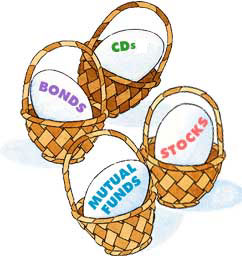Meaning of Investment Portfolio
A portfolio is a collection of securities. Since it is rarely desirable to invest the entire funds of an individual or an institution in a single security, it is essential that every security be viewed in a portfolio context. An investment portfolio comprising of different types of securities and assets.
As the investors acquire different sets of assets of financial nature, such as gold, silver, real estate, buildings, insurance policies, post office certificates, NSC etc., they are making a provision for future. The risk of each of such investments is to be understood before hand. Normally the average householder keeps most of his income in cash or bank deposits and assumes that they are safe and least risky. Little does he realize that they also carry a risk with them — the fear of loss or actual loss or theft and loss of real value of these assets through the rise price or inflation in the economy? Cash carries no interest or income and bank deposits carry a nominal rate of 4% on savings deposits, no interest on current account and a maximum of 9% on term deposits of one year. The liquidity on fixed deposits is poor as one has to wait for the period to maturity or take loan on such amount but at a loss of income due to penal rate. Generally risk averters invest only in banks, Post office and UTI and Mutual funds. Gold, silver real estate and chit funds are the other avenues of investment for average Householder, of middle and lower income groups. If the investor desired to have a real rate of return which is substantially higher than the inflation rate he has to invest in relatively more risky areas of investment like shares and debenture of companies or bonds of Government and semi-Government agencies or deposits with companies and firms. Investment in Chit funds, Company deposits, and in private limited companies has a highest risk. But the basic principle is that the higher the risk, the higher is the return and the investor should have a clear perception of the elements of risk and return when he makes investments. Risk Return analysis is thus essential for the investment and portfolio management.
Why Investment Portfolio?
You will recall that expected return from individual securities carries some degree of risk. Risk was defined as the standard deviation around the expected return. In effect we equated a security’s risk with the variability of its return. More dispersion or variability about a security’s expected return meant the security was riskier than one with less dispersion.
The simple fact that securities carry differing degrees of expected risk leads most investors to the notion of holding more than one security at a time, in an attempt to spread risks by not putting all their eggs into one basket. Diversification of one’s holdings is intended to reduce risk in an economy in which every asset’s returns are subject to some degree of uncertainty. Even the value of cash suffers from the inroads of inflation. Most investors hope that if they hold several assets, even if one goes bad, the others will provide some protection from an extreme loss.
